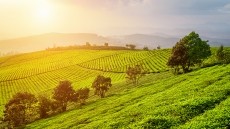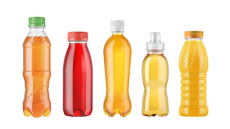Ag tech experts call for solutions to bring down prohibitive upfront costs

Food and ag tech is increasingly recognised for its transformative potential, the opportunity it unlocks to develop a more sustainable food system that can do more while also protecting and restoring natural capital. As a result, we’ve seen a massive influx of investment into this space. According to data from Ag Funder – investment in ag tech increased to nearly $8bn in 2020.
With the growing recognition around climate change, there’s a fervour among investors to focus on the ag tech space as a solution, Anne Greven, Global Head of Food and Agribusiness Innovation and the FoodBytes! platform at investment bank Rabobank, told FoodNavigator’s recent Climate Smart Food.
“There’s a real recognition that we need to accelerate the pace of change and the adoption of robotics and other types of technologies,” she explained. “These are expensive changes that require a lot of investment, but the belief is that they will have an excellent return.” For example, she noted we’ve seen a great investment in vertical farming this year. “But I think all things related to controlled growing and technologies around enhancing yields will also see real growth over the next five years.”
As well as cutting the overall carbon footprint of food production, technologies such as crop breeding, precision agriculture, robotics and automation, vertical farming, and mobile applications, also promise to reduce farmers’ dependency on hired labour. “The growing issue of labour shortages across the food and ag system which will probably propel more development and more adoption of robotics at the farm gate through the whole supply chain,” said Greven.
Costs of entry are a barrier
But cost remains a barrier to the adoption of these types of technology, our panellists warned.
Vertical farming, for example, is an area that’s making a lot of headlines by offering benefits including no pesticides or herbicides, less water, no transport, less food waste, higher production and better shelf life. But initial capital expenditures are higher than greenhouses and conventional farming, admitted Kirill Zelenski CEO of iFarm. Though CAPEX costs are expected to drop as the sector attracts more investment, he said. “10 years ago, it was not possible to even use artificial LED lighting for indoor farming. Now it’s not that expensive. I think in five years from now it will be cheaper by half and more affordable for everyone.”
Alun James, CTO of the R&D consultancy Sagentia Innovation, agreed upfront costs are a significant barrier to entry, though once up and running these technologies becomes efficient enough to start to pay for themselves.
Potential solutions, he proposed, “could be banks bringing in more leasing type finance or the companies themselves offering their services rather than their products”.
Greven agreed greater investment will bring down costs. “We’re going to have to deploy many types of different technologies in concert,” she suggested. “These are all things that must come together to accelerate change. Some of these technologies are not new and have become more efficient so we can more readily deploy them in a way than we could have even five years ago.”
Government incentives needed
But for these technologies to be affordable and accessible for all communities, Greven added a shift is needed in three areas: government, the consumer and corporates.
“It’s going to be a combination of regulation and incentives from governments that help fund it and it’s also going to be the consumer paying more,” she explained. “Margins in food and ag especially at the farm gate are also very thin so there’s going to have to be shared costs and investments made from large food companies to accelerate the change.”
She stressed: “There are technologies which promise to reduce carbon and the use of pesticides – but there needs to be alignment from the regulators to allow these things to happen quickly.”
Grigoris Chatzikostas from FoodScale Hub, which promotes various tech-enabled agrifood projects in the EU, pointed out: “We cannot ask farmers to go green if their accounts are in the red. For those farmers who might not be able to afford the technology, we might have to think of different business models such as collaborative ownership or leased business models.”
One area where costs have significantly been slashed is biological data. This development inspired the foundation of Synomics. This company is using biological insights to give farmers and food producers the ability to learn more about the animals they breed and the crops they grow to ultimately help them feed the world’s billions in a more sustainable way.
But data costs are falling
“We’re a point now where a whole genome sequence of an animal or a human costs less than $1000, compared to $100m 20 years ago,” said Synomics CEO Peter Kristensen. "So, the acquisition of genomic information is no longer cost prohibitive. The performance characteristics of plants and animals in terms of disease and yield have become increasing easy to collect.”
So far Synomics has selectively bred the Cassava plant to make it more disease resistant, which can help with problems like food security and food waste in sub-Saharan Africa. It has also identified a way to reduce emissions within agricultural cattle by selecting the ones that produce less methane genetically. That can help reduce emissions and also save farmers money by not having to choose expensive feed.
Lindsay Suddon from farm management software provider Proagrica agreed that a smarter, more efficient industry that makes full use of big data and new technologies will benefit the whole supply chain. “Very soon farmers are going to be asking themselves how can we afford not to do this,” he said.
Missed Climate Smart Food? Don't worry, the four days of content is still available for you to stream on demand HERE. Registration is free.
































